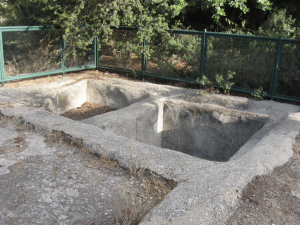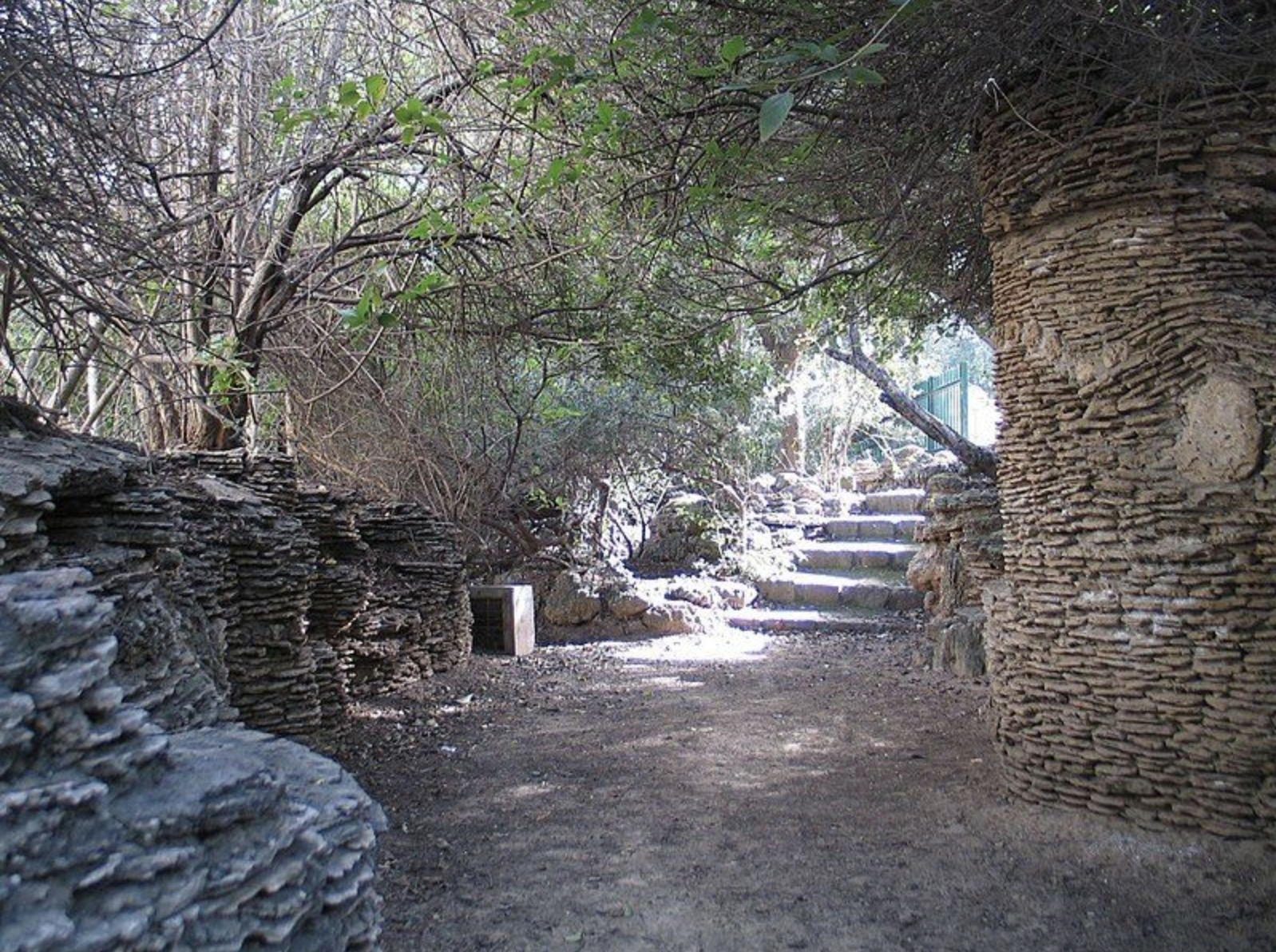You shall furnish him liberally out of your flock, out of your threshing floor, and out of your winepress. As the LORD your God has blessed you, you shall give to him. – Deuteronomy 15:14
Wine production was a popular industry in the Holy Land. The Bible has dozens of references to wine, winemaking and winepresses. The first reference is of Noah, the world’s first winemaker (Genesis 9 21-22). Gan HaGat, Hebrew for “Wine Press Garden,” is a hidden Tel Aviv gem that well encompasses Israel’s juxtaposition of the old and new.
Wedged between city buildings and accessible only by a small side street, the public neighborhood garden is relatively unknown. It is mostly visited by young families, their kids keep busy in the playground enjoying the slides and swings. But right up a small staircase rests an archeological discovery of a wine press from the Hellenistic period, around 400 to 200 BC.
The stone wine press is comprised of three parts: a flat surface where the grapes would get stomped, a shallow silo to separate the waste, and a deep silo where the grape juice collected. Stone pillars and millstones from the same era are also present, scattered about the garden and often used as makeshift benches for visitors.
It started as a military base
The garden has an interesting history: In the 1940s it was a transportation base for the British army, only to be inherited by the Israeli Defense Forces when Israel received its independence in 1948. In the following decade the IDF planned on developing the base for its purposes, but when construction began the tractors accidentally bumped into archeological  remnants.
remnants.
The municipality of Tel Aviv then changed its plans. It called in the archeologist Doctor Yaakov Kaplan who spent the next decade or so excavating the wine press and dated it back to the times of the great king and high priest Alexander Jannaeus. The municipality further developed the site for public use, planting trees of the Seven Species—namely olive, palm and pomegranate tress—to fortify the Israeli atmosphere. In 1971 the site had its official reveal to the public and was declared a public garden.
When you admire the wine press and sit on the ancient stone pillars, don’t forget to check out a small, hidden staircase passage to the left of the wine press. Leading down to what appears almost like a grotto, be sure to run your hands on the impressive walls made of thinly cut sheets of kurkar rock (lithified sand dune) and drink the water coming out of the fountain hidden in the rock.
Know Before You Go
Garden is free and open to the public at all times.
Originally posted at Atlas Obscura.


